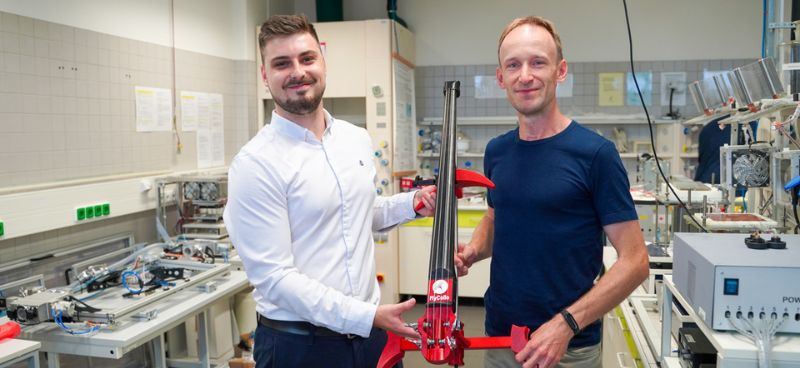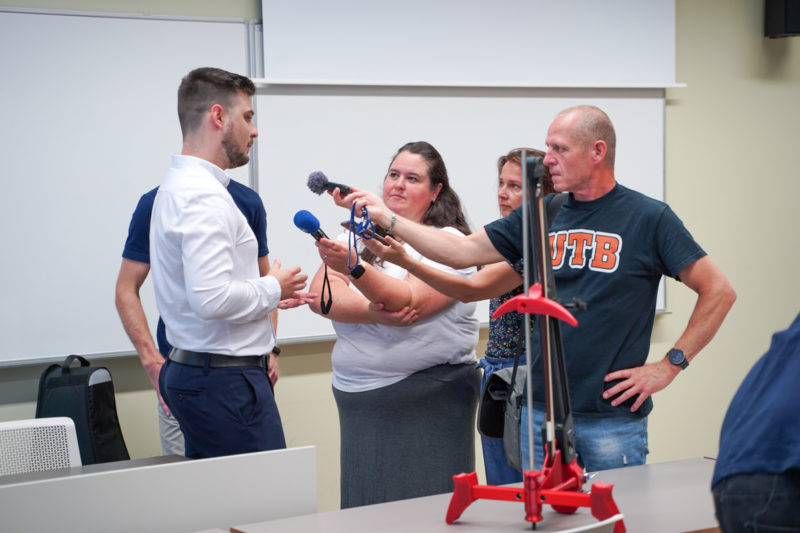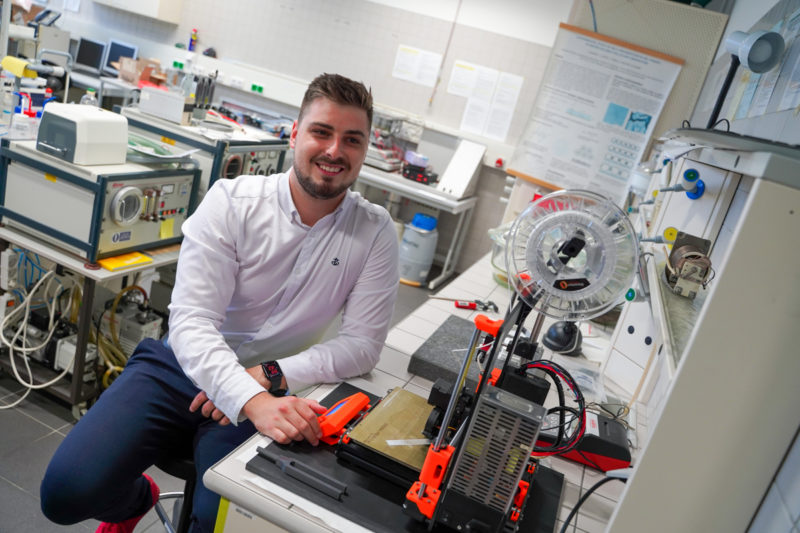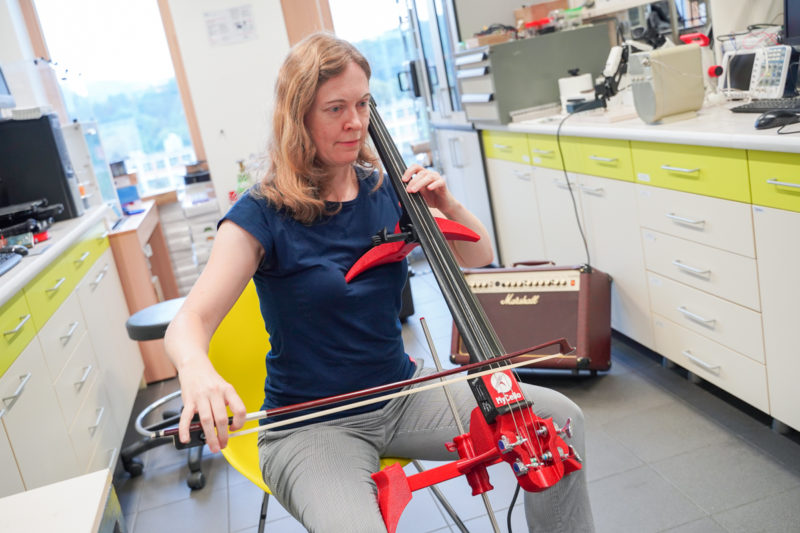
Zlín-Based Scientists Develop 3D-Printed Cellos
30. August 2023Electric musical instruments are not so uncommon these days. But those printed on a 3D printer are, by all means, unique. Scientists from the Faculty of Technology (FT) of Tomas Bata University (TBU) in Zlín are collaborating with the Přerov-based company Sensio.cz, which uses 3D printing to produce MyCello electric cellos. Zlín-based scientists help them find the most suitable materials.
Three years ago, Tomáš Zvoníček obtained his Master’s degree at the Faculty of Technology and began to intensely focus on the topic of 3D printing. “In my hometown of Přerov, I started working together with the Sensio.cz company. In addition to the actual printing technology, the issue of acoustic properties of 3D-printed materials was also interesting for me, and that was the reason why I decided to return to my Faculty.” While a PhD student, he focuses on the development of cellos and on studying of acoustic properties.

According to Tomáš Zvoníček, 3D-printed musical instruments have many advantages. “The cello is quite a loud instrument. MyCello does not have an outside mould and is, therefore, much less loud. Sound is transmitted towards the output via a built-in electronic sensor so that you just need to put on headphones to hear the full sound. This is also an advantage for cello players who need to practice and don’t want to disturb other family members and neighbours. Thus, nobody can hear them play,” says Tomáš Zvoníček.
However, these are not the only advantages of a 3D-printed cello. “A custom-made wooden instrument can be manufactured, but it is relatively expensive and time-consuming, and any additional modifications are rather limited. The 3D printing process is simple, the cello can be easily modified, adjusted for a specific cellist, and we can produce it in various colours. A lady wrote us that, after an accident, she was unable to play holding the bow in her right hand, and asked us if it would be possible to make a mirrored version of the instrument so that she could play again. No problem for a 3D-printed product,” adds Tomáš Zvoníček.

At the same time, the instrument is much lighter and more compact. A cello weighs just over three kilos, which is approximately a half of the weight of a wooden one. The shape of a 3D-printed cello is based on the shape of the outside mould of an instrument made of wood. Only the necessary functional parts of the original body have been left – the chest rest, the left-hand armrest and the knee rests. Thus, musicians do not have to relearn anything.
The unique cello is made primarily of PET-G material. For some parts, a combination of materials is used, for example, carbon fiber polycarbonate. That applies to places where it is necessary to lighten the cello or to add mechanical strength. “We are working on improving the mechanical-acoustic properties. From this point of view, we are interested in two things. On the one hand, it is the material we use for printing as it has a significant impact on sound capture. However, the internal structure of the printed parts of the instrument is important as well. Another challenge is to reduce the printing time, which is currently around 100 hours,” adds Petr Smolka, the principal investigator of the project.

“It is a unique research not conducted at any other university worldwide – research into the acoustics of plastics. For example, car manufacturers use plastic parts in order to dampen the sound, we, on the contrary, need to achieve the greatest possible resonance,” adds Jan Tobolík, CEO of the Sensio.cz company. “Some of the materials are based on maize starch and, when being printed, they smell like roasted popcorn,” he says, with a smile.
Thanks to the 3D-printed cello, the Přerov-based company is world-renowned as the only producer of such a product. The research carried out by Zlín-based scientists is of great importance for further development in the field of studying of acoustic properties of materials used in the production of musical instruments, as well as of other structures mediated by additive technology. There is another challenge ahead of them – a 3D-printed guitar.